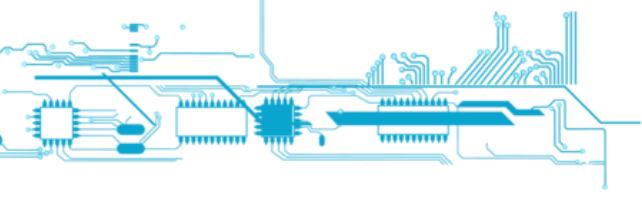
The Electronic Design InterchangeFormat (EDIF) was developed and published by EIA. It is actually a modeling language description scheme. EDIF is a structured ASCⅡ text file using BNF description mode. Later versions of EDIF300 use EXPRESS3 information modeling language. The information described by EDIF300 is divided into hierarchical information, connectivity information, library information, graphic information, instantiable object information, design management information, module behavior information, simulation information and annotation information.
EIA released a new version, EDIF400, in 1996. In addition to the schematics and connectivity capabilities of EDIF300, EDIF400 adds a description of the process assembly of printed circuit boards and multi-chip modules (MCMS). There are many problems in PCB design and manufacturing, including Gerber data calibration, inconsistent data format, wrong component library call and the way to provide electronic data, etc., EDIF 400 provides better solutions. It transforms the single entities data generated by EDA tools into a variety of information required for the manufacturing and assembly process. Many EDA developers, including Mentor and Candence, have adopted the EDIF400.

In addition to Gerber, GenCAM, ODB + +, and EDIF400, there are several PCB data exchange standards in use. They are: ① Initial Graphics ExchangeSpecification (GES) -- ANSI standard, used for three-dimensional geometric model and engineering description, including technical description, engineering graphics, electronic design data, manufacturing design data and numerical control information, etc. (2) Product Model Data Exchange Standard (STEP) -- ISO standard, whose ultimate aim is to replace all existing international design/manufacturing data exchange standards; ③ VHSIC Hardware Description Language (VHDL) -- IEEE standard, used to define the function and logical structure of the digital circuit system, but also can describe the behavior and logical structure of PCB; ④DPF and BARCO format -- IPC - D-351 standard; ⑤ EIA494-CNC format -- IPC - D-352 standard; ⑥ Format of IDF 2. 0 and IDF 3. 0 -- IPC - D-356, IPC - D-355 standard; ⑦INCASES Format (SULTAN) -- IEC 1182-10 standard.
PCB data exchange technology and standardization
At present, while EDA software and CAM equipment are undergoing great changes, some experts say that progress in the field of PCB product data exchange has lagged behind for more than 20 years, and the lack of standardization of data exchange has indirectly led to higher design/manufacturing costs.
The urgency of changing the PCB data exchange mode
Existing PCB data standards, such as IPC D350, generally favor a point-to-point exchange between two specific objects (design tool and design tool, design tool and manufacturing application). Figure 1 can visualize this mess. Where T represents different tools, D represents different PCB data structures, A represents different applications, and the double-line arrows represent point-to-point PCB data exchange. The many-to-many mapping relationship between EDA tool output and manufacturing application is the root of the chaos.
At the output end of EDA tool T and the input end of manufacturing application equipment A, if only a single PCB data format standard D is used for exchange, it will greatly simplify the PCB information exchange.
In the process of standardization of PCB data interchange format, the fiercest competition is between GenCAM and ODB + +. Valor offered to donate ODB + + to IPC and proposed that the organization declare ODB + + an IPC/ANSI standard; Instead, IPC requires Valor to adopt GenCAM as the data standard and ODB ++ as the local database. However, Valor decided that ODB + + was the best database and rejected GenCAM. The IPC believes that if ODB + + is adopted as a formal standard, then the upgrading of the format will be controlled by Valor, which is to the detriment of the PCB industry; Valor, for its part, argues that when it comes to pushing a data format, it may have an advantage as a company that is closer to its users than an industry body such as the IPC. In essence, the information models of ODB + + and GenCAM are very similar. GenCAM, by contrast, is not so good at etching and wetting processes, but it is useful in manufacturing. Its main advantages are that it can better support the circuit internal testing, manual readability, and has the support and maintenance of the international Organization for Standardization. ODB+ +, on the other hand, does not contain sufficient manufacturing information, schematics, and test fixed information, and the files are large.
Most current EDA and CAM software vendors support both formats. Despite the fierce competition, the development of ODB + + and GenCAM is still inextricably linked. Valor is a long-time member of IPC, and this competition between ODB + + and GenCAM will lead to the development of both formats.







